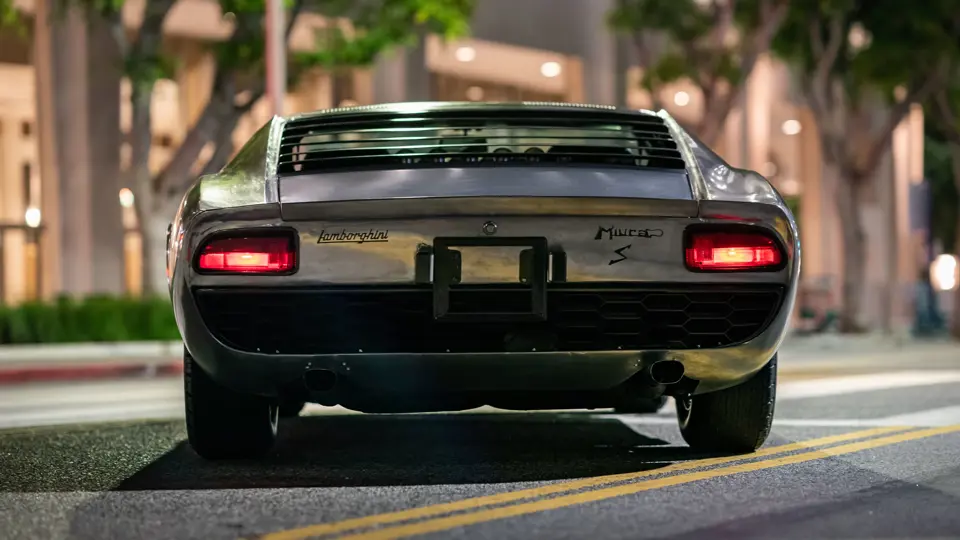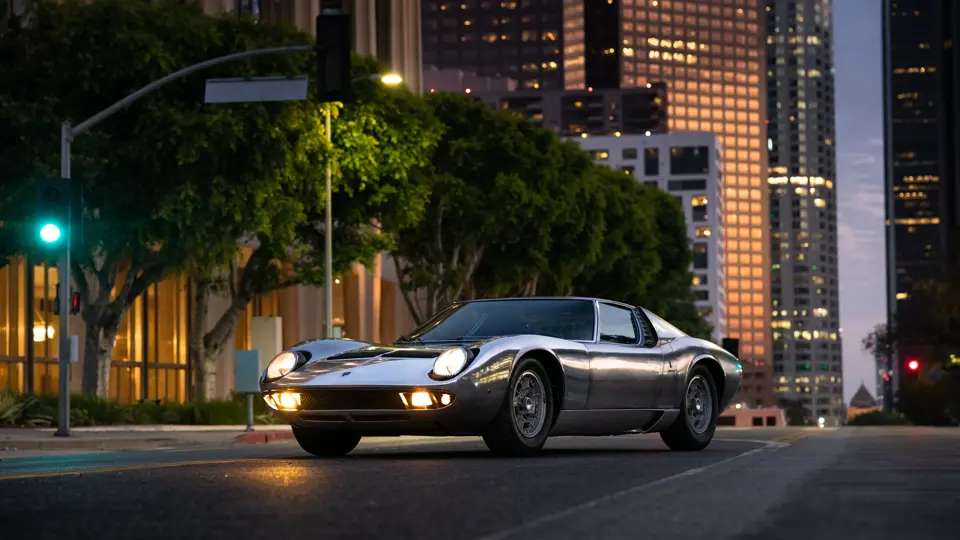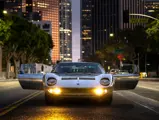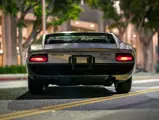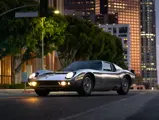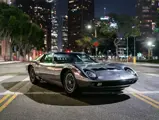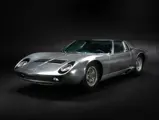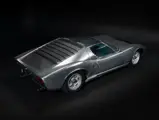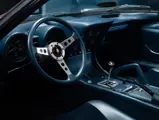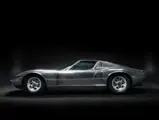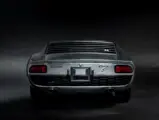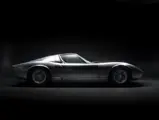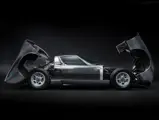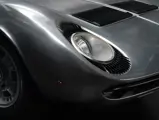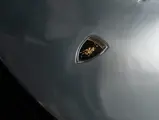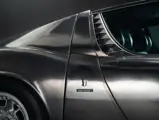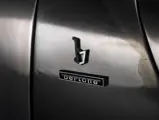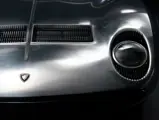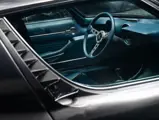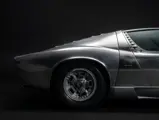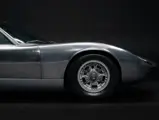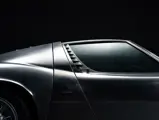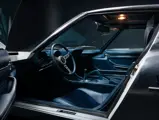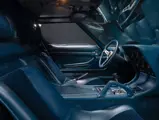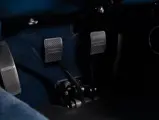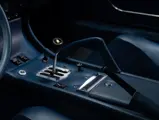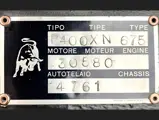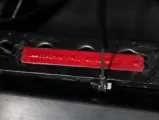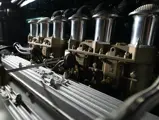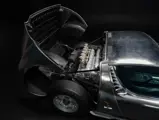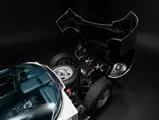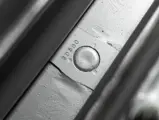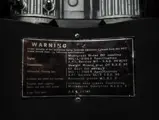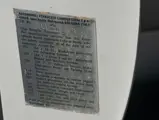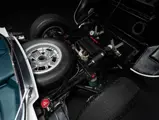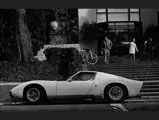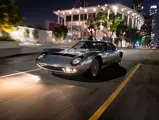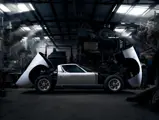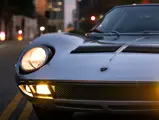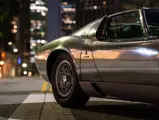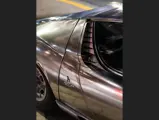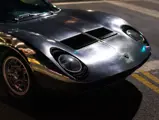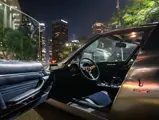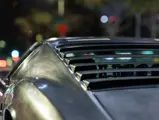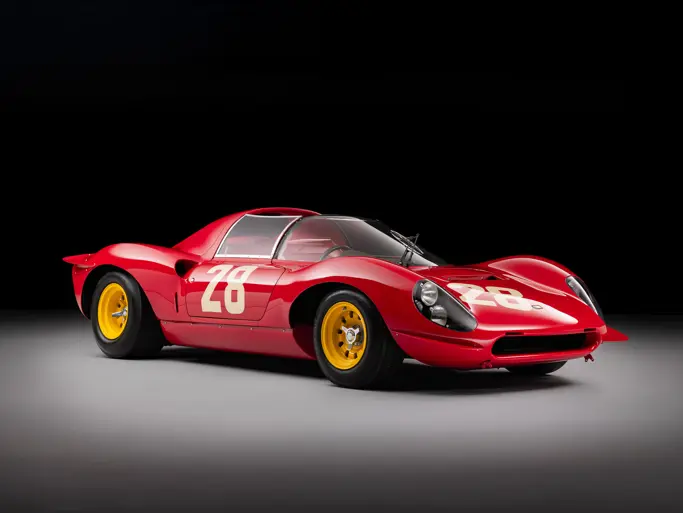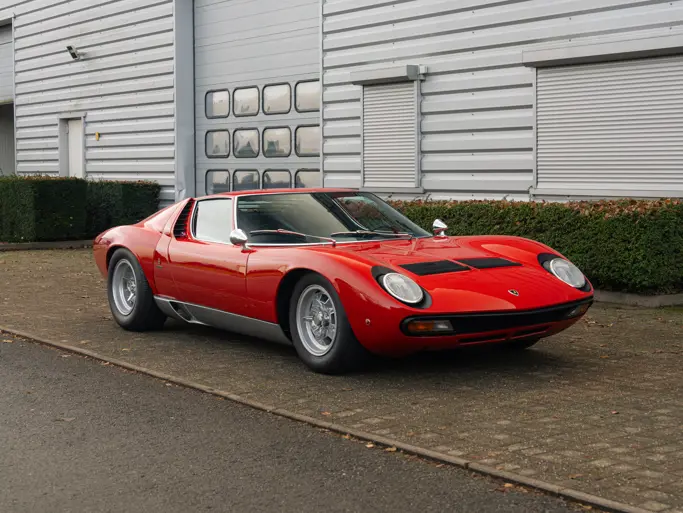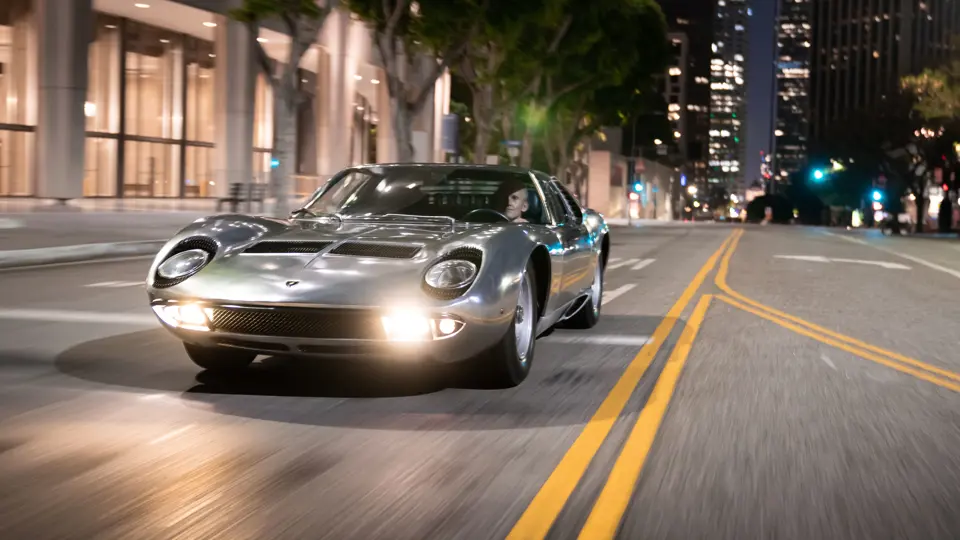
1971 Lamborghini Miura P400 S by Bertone
{{lr.item.text}}
$2,095,000 USD | Sold
{{bidding.lot.reserveStatusFormatted}}
- A U.S.-spec Miura with an incredible history; hidden away in a California Bay Area warehouse for over four decades
- A unique time capsule driven fewer than 16,000 miles at time of cataloguing
- Discovered and revitalized by a dedicated, preservation-minded Miura enthusiast
- Late Series II “transitional” P400 S factory-equipped with SV features
- Originally finished in Gray-White over a full blue interior
- Presented today in exceptionally prepared bare metal
- Featured on the cover of the Summer 2021 issue of Retromotive
It is almost a given that, within the hyper-competitive world of modern supercars, every passing year will bring some new advancement—a new wedge more powerful, faster, and more expensive than the last. Rare, however, is a machine that is genuinely revolutionary, forcing competitors to adopt its innovations or be left in the dust.
The Lamborghini Miura was precisely such a car. With its rear-mid-engine transverse-mounted V-12, fully independent suspension, disc brakes, and effortlessly aggressive stance, the Miura’s bare chassis was enough to draw crowds (and customer orders) when it debuted at the 1965 Turin Motor Show. Bertone’s sleek bodywork only enhanced the Miura’s impact, while its staggering capability put rivals like Ferrari on notice: This was the future of high performance. The formula established by the Miura is still broadly used by supercars to the present day.
While the Miura retained the same basic layout and look throughout its entire production run, which ended in 1973, its appearance and specification did evolve over time. Notably, late Series II S cars maintained the stylistic purity of earlier models, including narrow fenders and the signature “eye lashes” framing the headlights, while gaining notable performance enhancements including a reinforced frame with improved airflow ventilation for both radiator and engine compartment cooling, larger venturi Weber carburetors, ported intake manifolds and cylinder heads, vented SV-style brakes, and CV joint rear axles.
Approximately 50 cars were built with all of these desirable “transitional” features. The car offered here, chassis 4761, is one such example.
THE MAKING OF A TIME CAPSULE
This Miura would not have made it to the present day in its remarkable condition were it not for a few unexpected historical twists and turns. As reported by Automobile in July 2020, this car was first owned by a 19-year-old Iranian coed attending college at University of California, Berkeley. Her well-connected parents purchased and took delivery of this U.S.-specification car at the Lamborghini factory. The daughter was supposed to list it for sale upon its arrival on the West Coast, likely as a means of transferring money out of Iran.
Things did not go according to plan, however, when the daughter decided to keep and drive the car for herself! She did apparently go through the effort of posting a classified ad for the car at one point, satisfying the letter of her parents’ plan, if not its spirit. Her parents were either amenable to this arrangement or unable to do anything about it, and she continued to drive the Lamborghini for roughly two years, as indicated by a sequence of repair invoices on file, until it was laid up following an incident.
Although damage was localized to the front right headlight area of the car, the complexity of the Miura’s design and the intricate shaping and fit of its clamshell aluminum hood presented too great of a challenge for local repair shops at the time. The Miura was eventually purchased by the San Mateo body shop owner who had previously done minor repairs on the car. He intended to return it to roadworthiness, going so far as to acquire parts from the Lamborghini factory in 1977, yet the project never moved forward. Fortunately, the original, numbered parts removed from the car during this period were saved.
Over four decades later, the Miura was acquired by the present consignor, a passionate enthusiast and preservation specialist whose other Miura was awarded Best Postwar Preservation Car at Pebble Beach. Recognizing the unique time capsule condition of the car and its potential as a reference example for restorers—even elements as ephemeral as its PPG paint label and the set of Pirelli GR70VR15 Cinturato CN73 tires on which the car was delivered were retained—its low mileage (the odometer records fewer than 16,000 miles traveled at time of cataloguing), and its wealth of accompanying documentation, he wisely opted to take the path of preservation rather than total restoration.
CHASSIS 4761 TODAY
Following his acquisition of the Miura in 2019, the consignor enlisted a team of experts to recommission the long-dormant Bull. Steve Beckman, whose Costa Mesa, California-based Beckman Metal Works, was selected to repair the fender bender that took the car off the road decades ago; in a painstaking task that took eight months to complete, Beckman reconstructed the car’s damaged nose, sectioning in metal only where necessary (and incorporating parts sourced from the Lamborghini factory decades ago into the repairs). Original pieces that were cut out were retained, with hundreds of photos documenting each step of the repairs.
Chris Morgan of Morgan Images provided additional paint and bodywork repairs, and he was ultimately responsible for stripping the remaining paint off the body to showcase the Miura’s sculptural form in bare metal. The original Gray-White can still be seen in the untouched door jambs and the front bulkhead of the car. This is paired with the car’s original, carefully preserved full blue interior—a dramatic and unforgettable combination.
On the mechanical side, the consignor turned to Lamborghini Miura specialist Jeff Stephan, who repaired or replaced components as needed. The car’s fuel tank was removed and serviced and fuel manifold was restored; the water and oil pumps were rebuilt, and new aluminum cooling tubes and brake lines installed. Engine timing chain tensioners were serviced and valve springs shimmed and adjusted at this point, and the twin distributors restored and timed.
Finally, the Weber carburetors—a specialty of Stephan’s—were restored using his proprietary process to the factory color and as-new condition, down to the red inspection marks on the jets and bodies. These were topped with dozen gleaming velocity stacks, constructed in Germany to specifications developed by Stephan and the late Lamborghini test driver Bob Wallace. The uninstalled factory Miura airboxes were retained, and they accompany the sale.
As offered today, Lamborghini Miura S chassis 4761 represents something truly special: a well-documented, low-mileage example of a revolutionary supercar in a highly desirable late-Series II S configuration, recently guided through a no-expenses-spared, historically sensitive revitalization with the aim of keeping the car as authentic as possible. Its next owner faces a difficult, but enviable, choice: Return its expertly prepared bodywork to its factory-correct appearance with a coat of Gray-White paint, apply a different color entirely, or—the boldest route, but perhaps the most rewarding—enjoy it in its dazzling bare-metal state as a unique tribute to the car that forever changed the state of high performance.


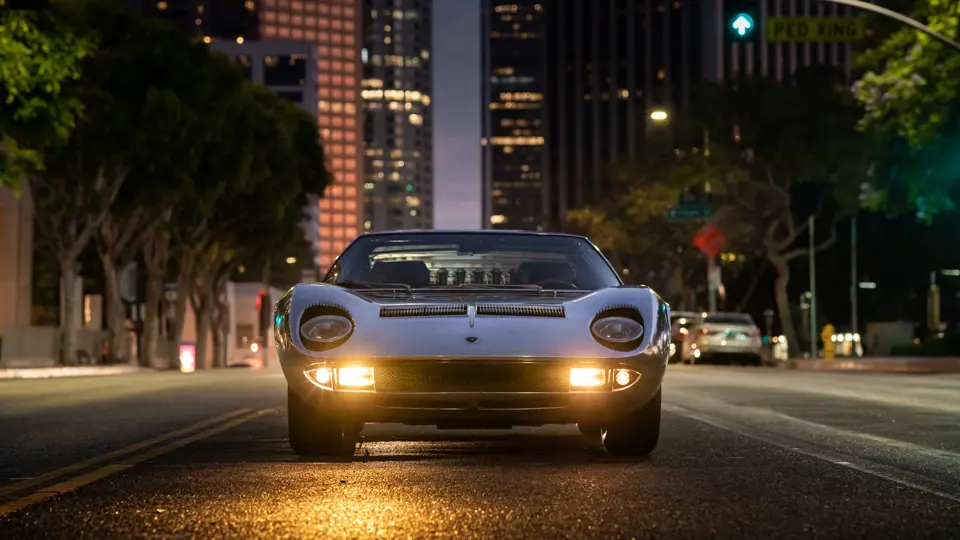

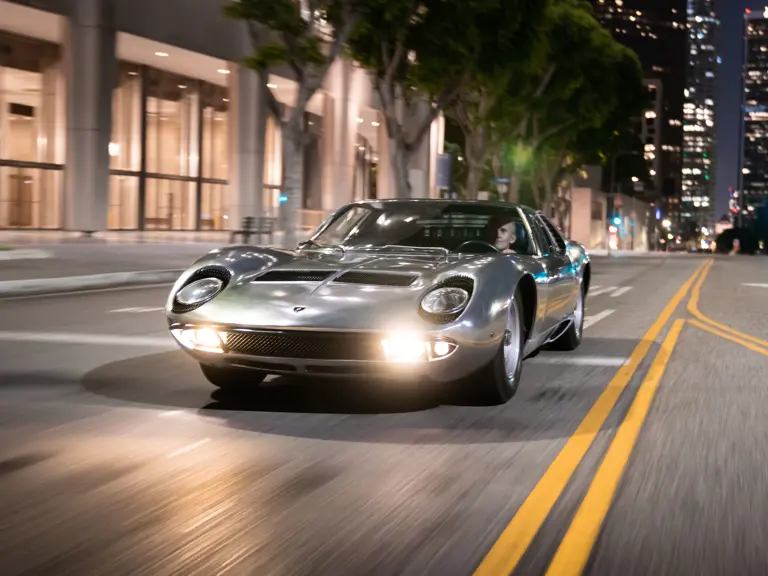
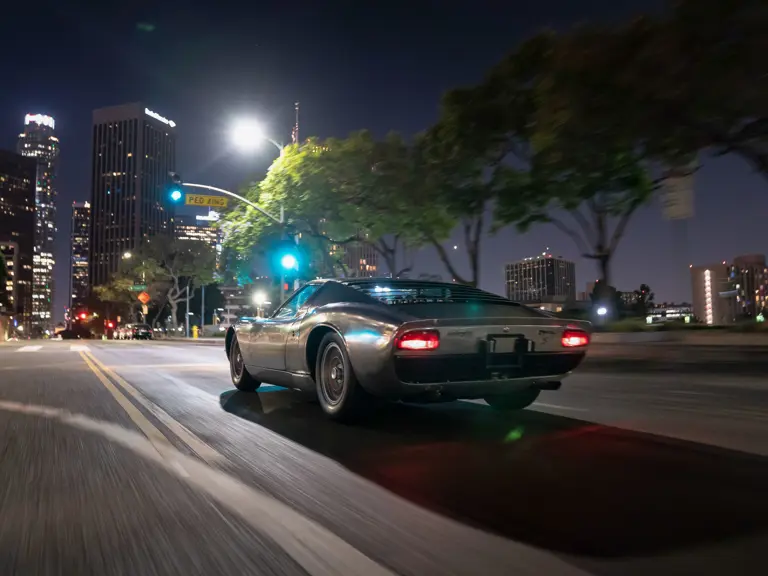
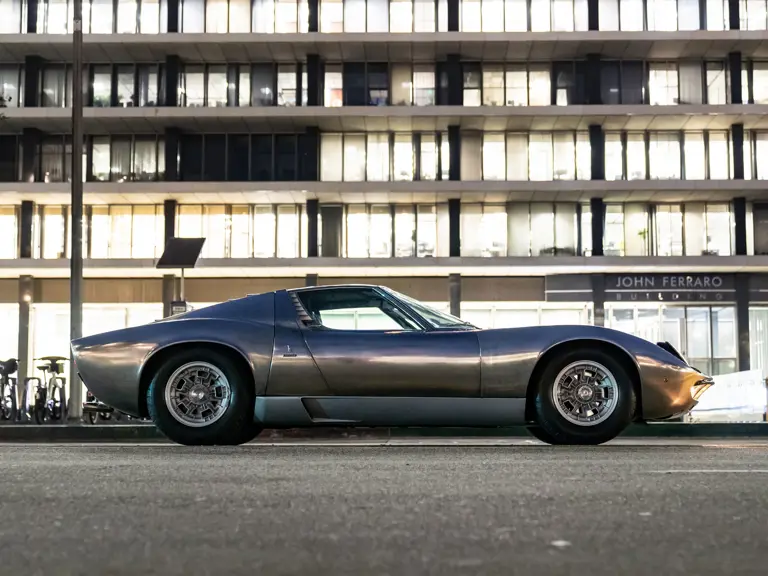
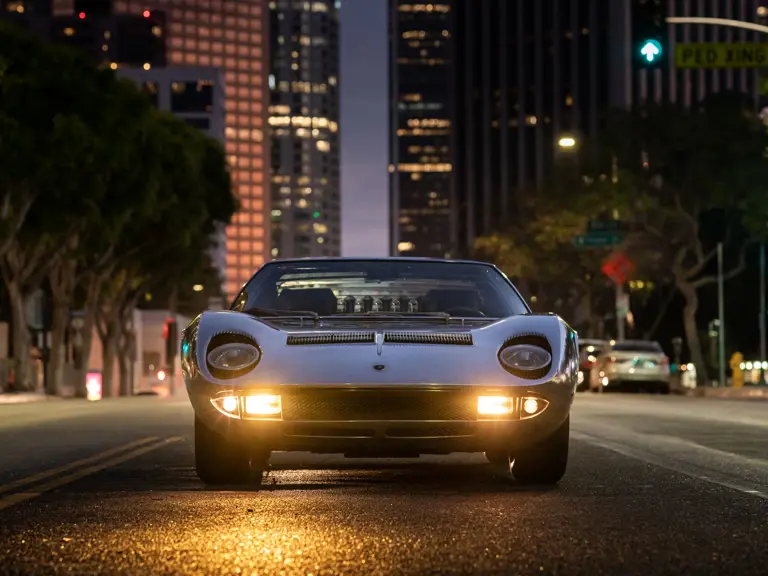
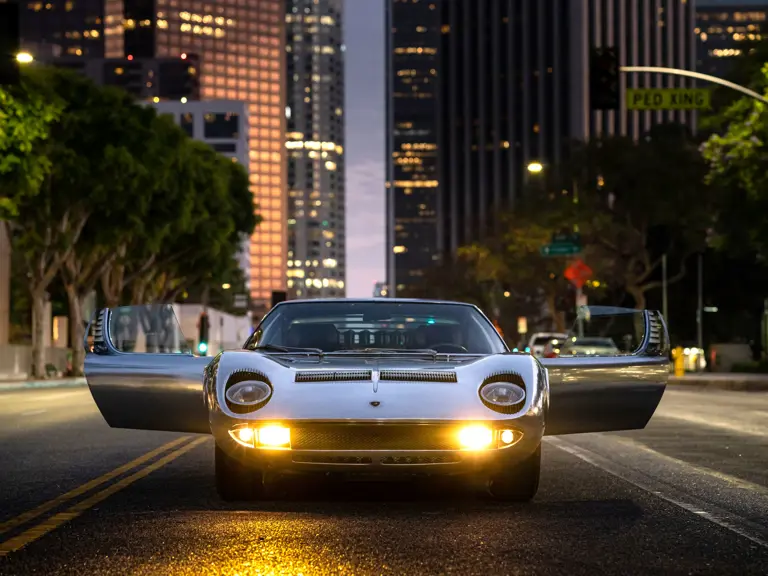
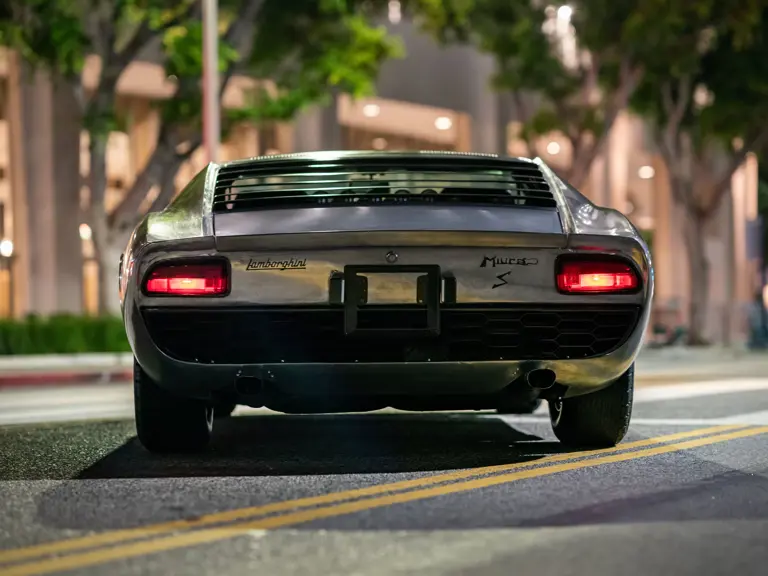



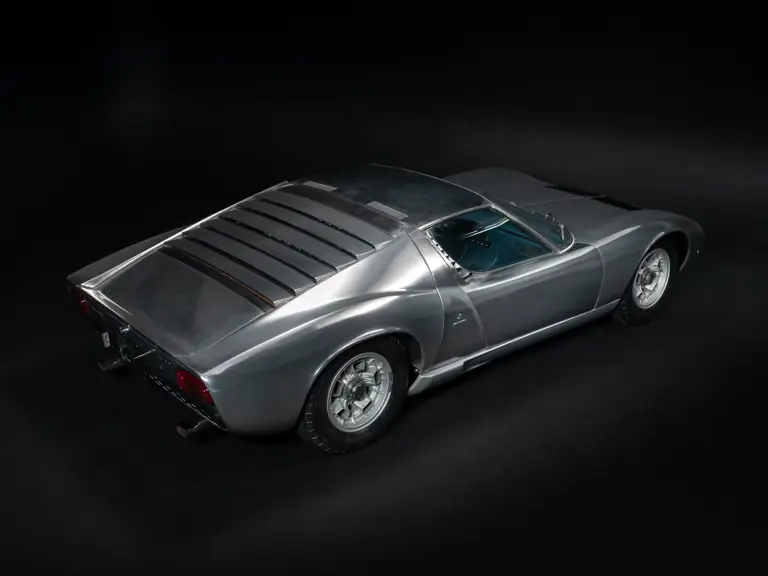


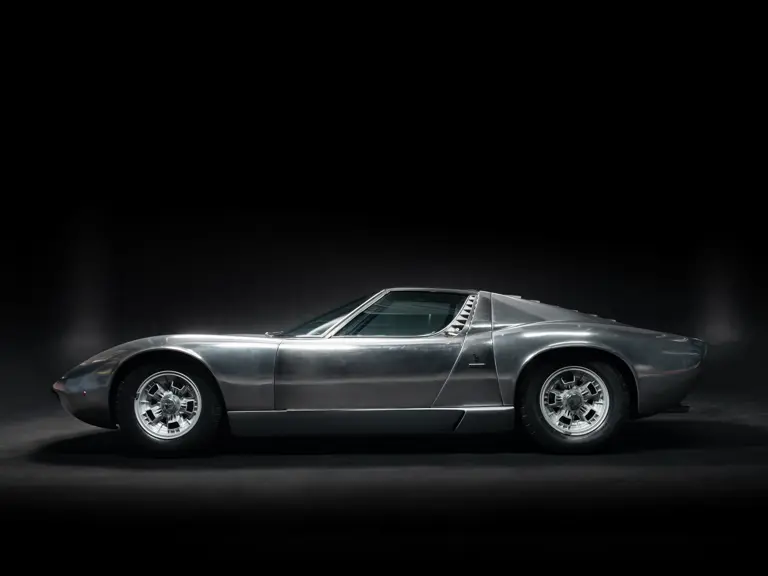
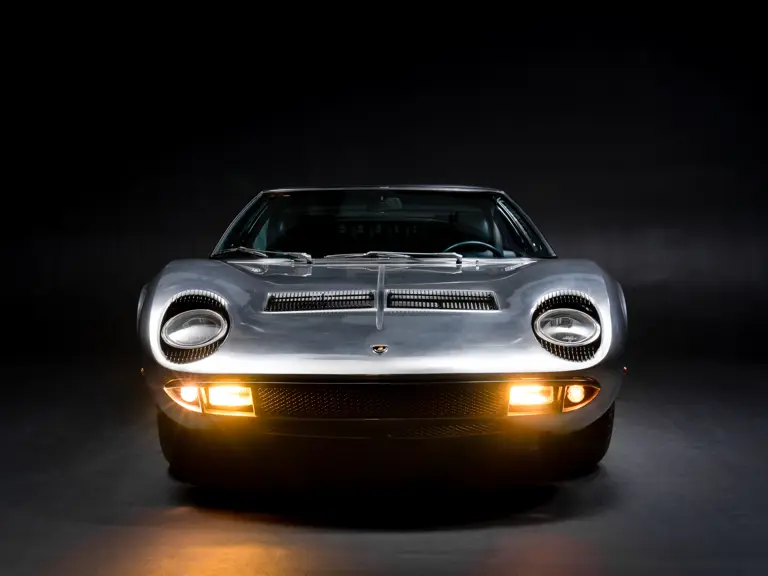

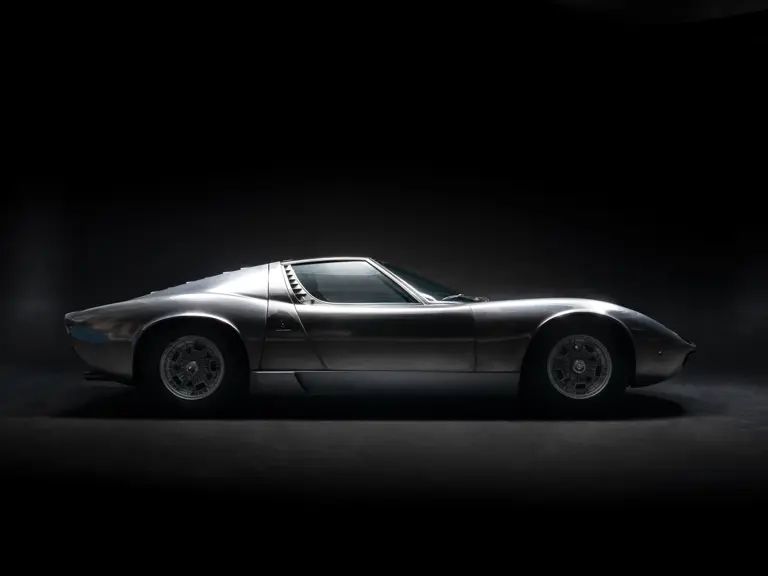
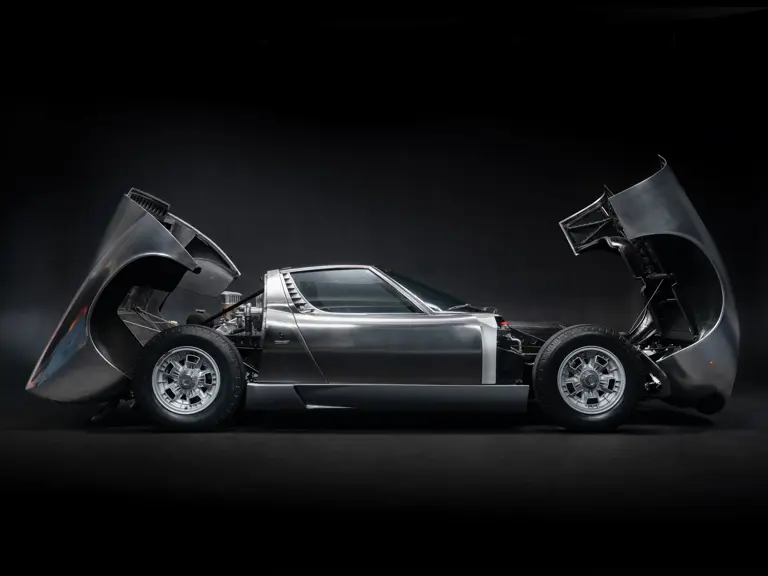


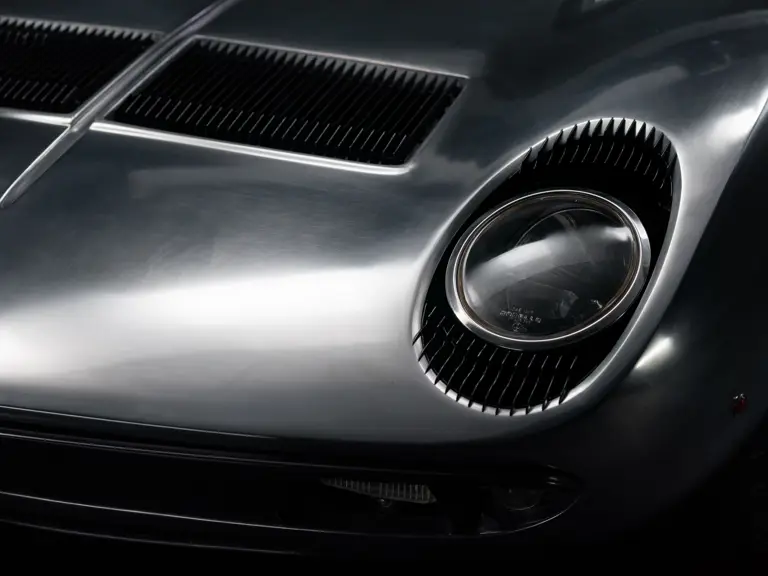
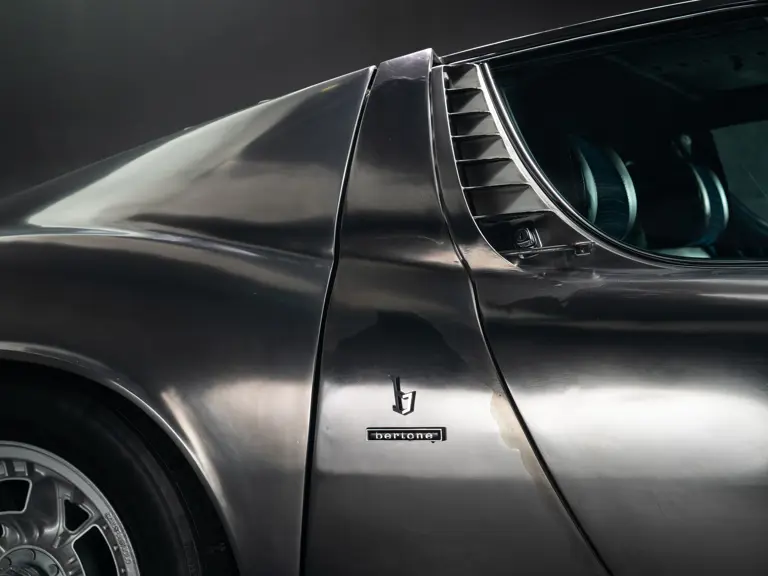

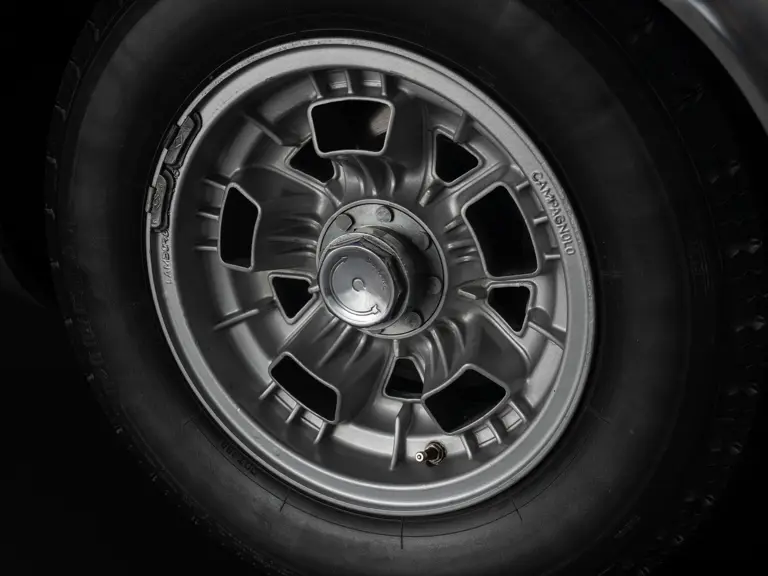

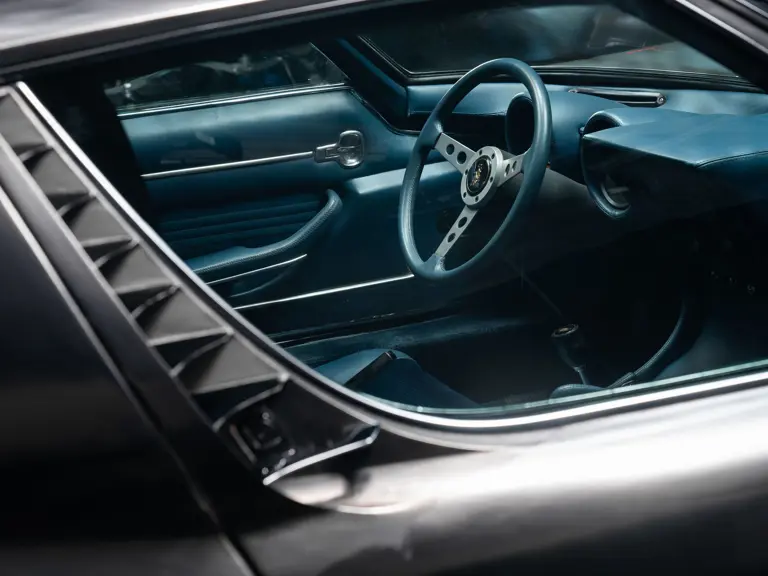

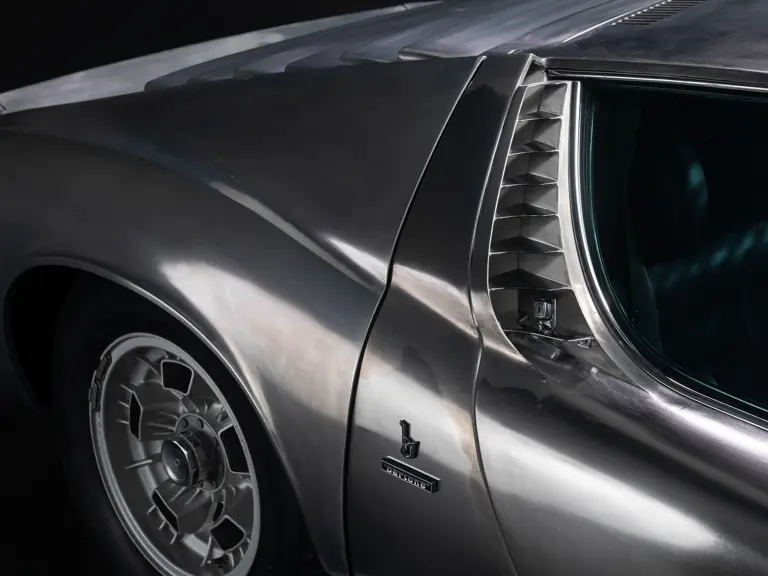
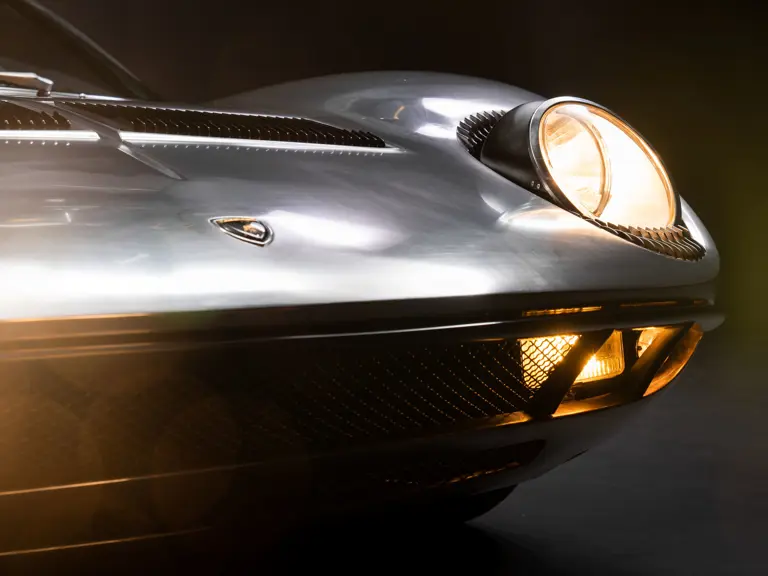

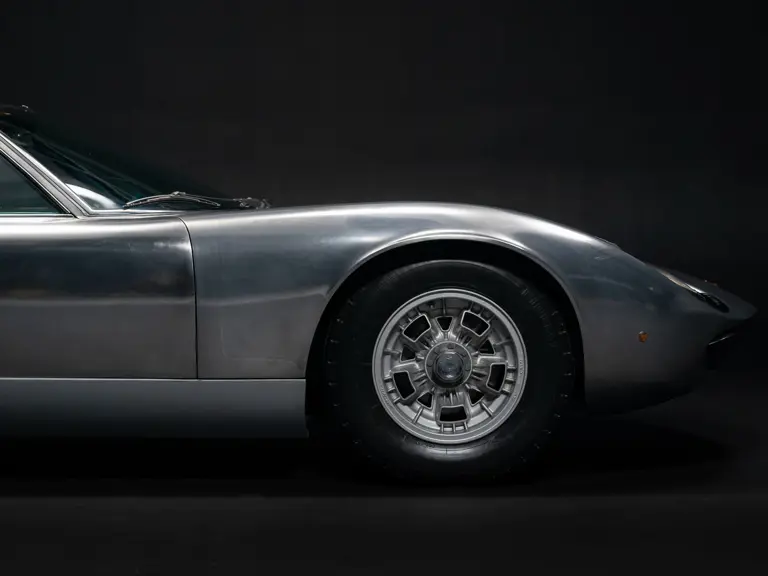
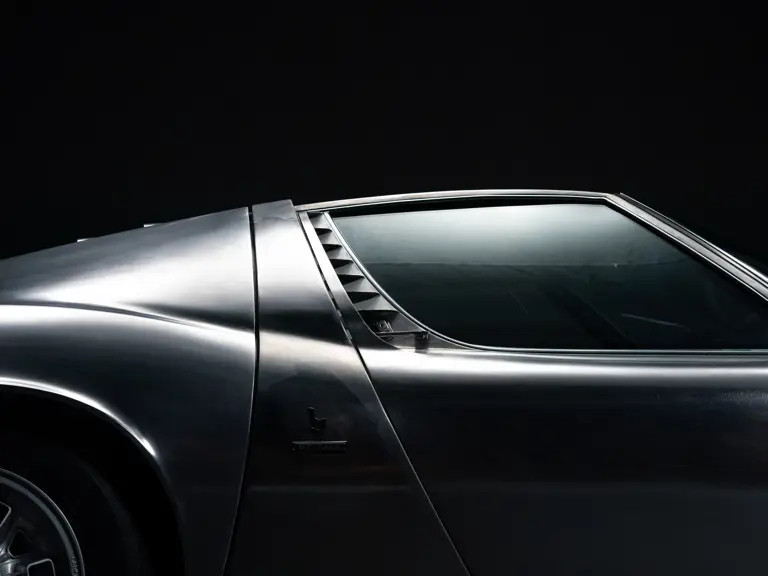
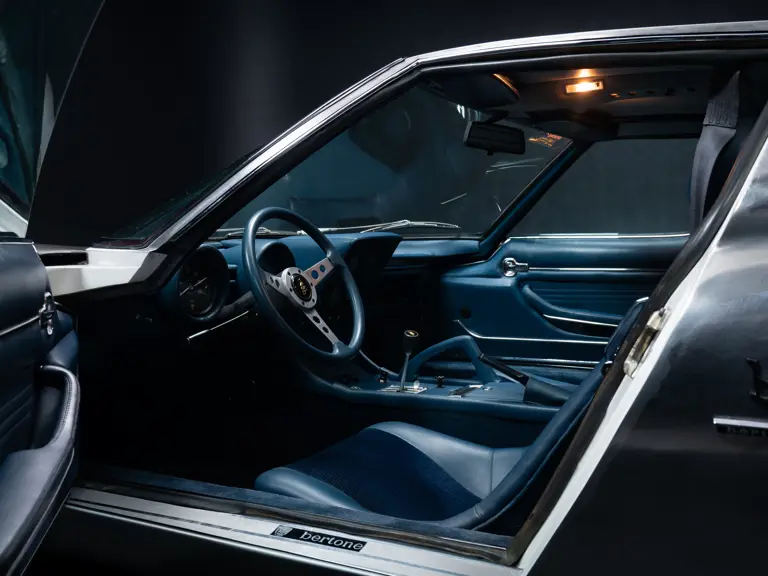
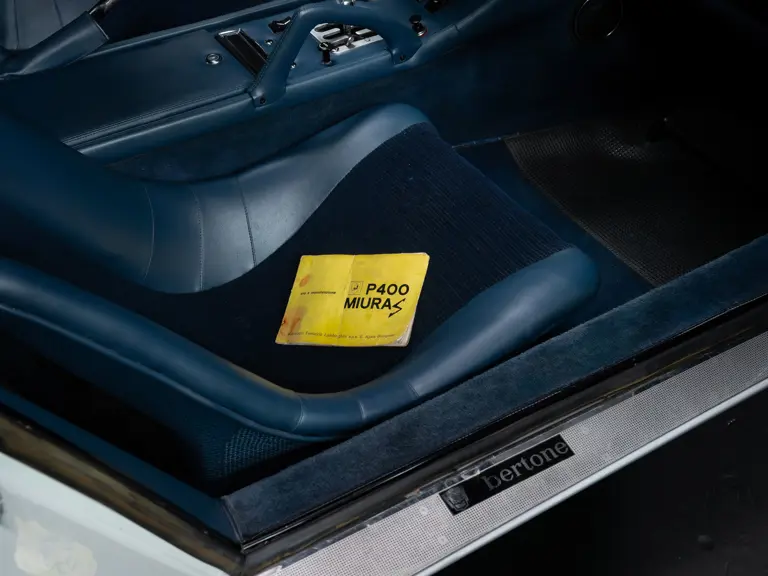

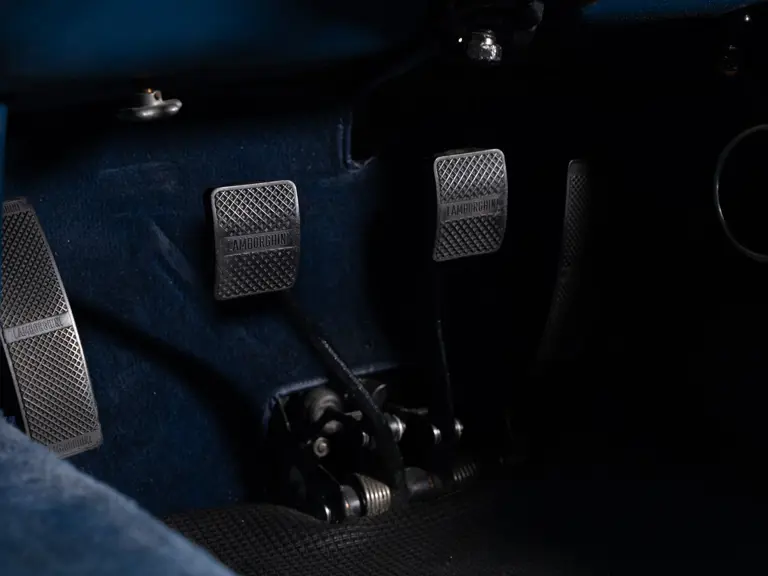
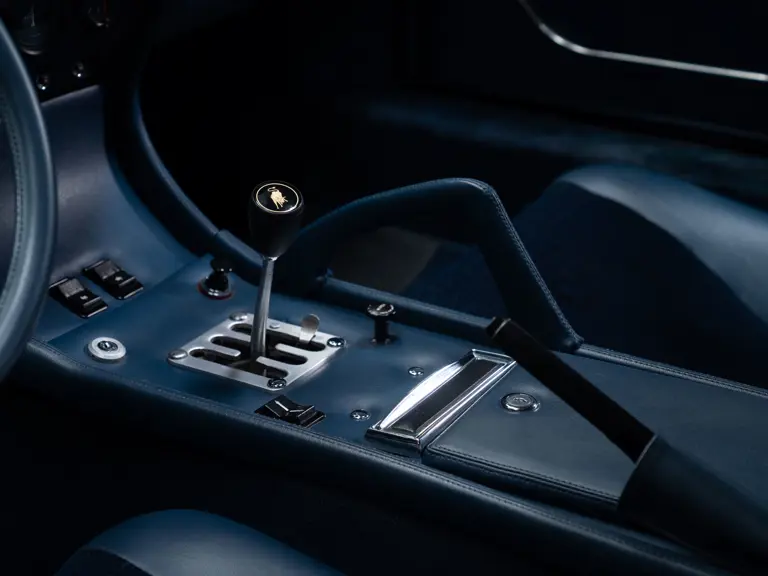
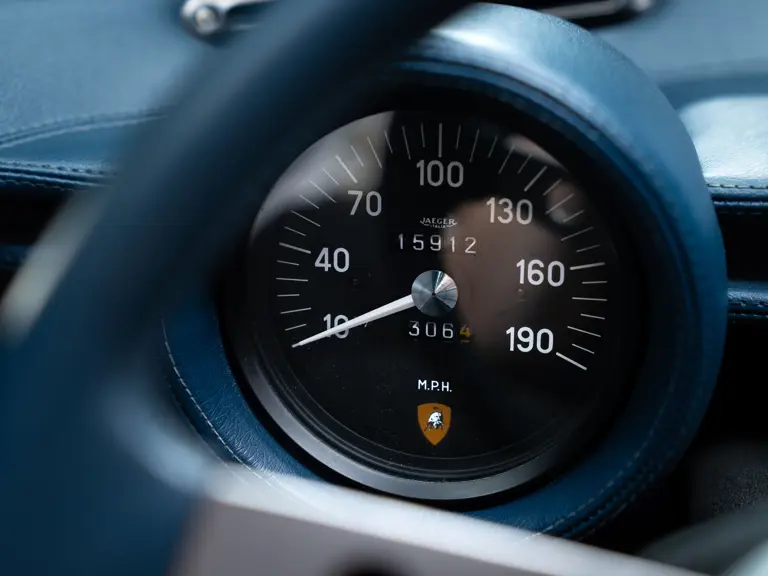
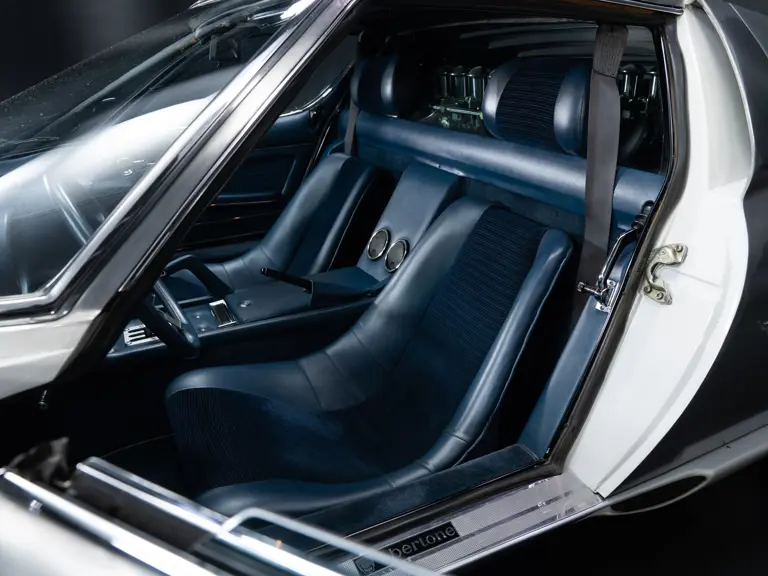
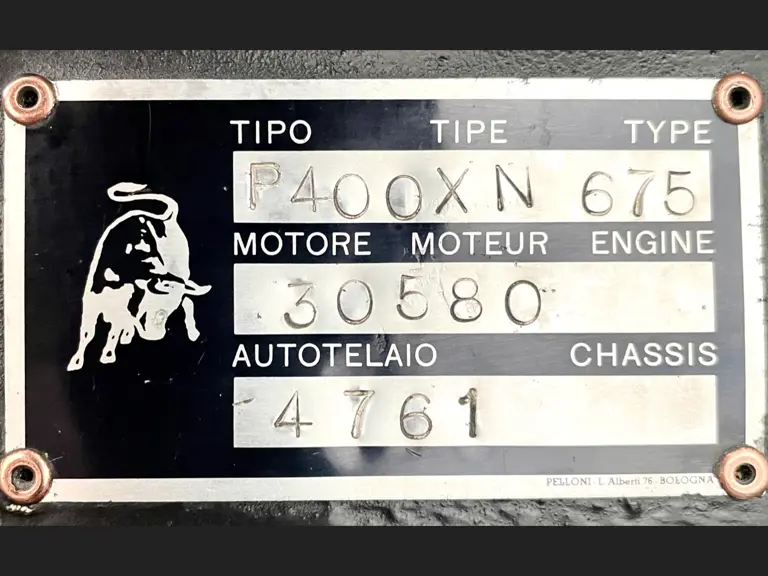

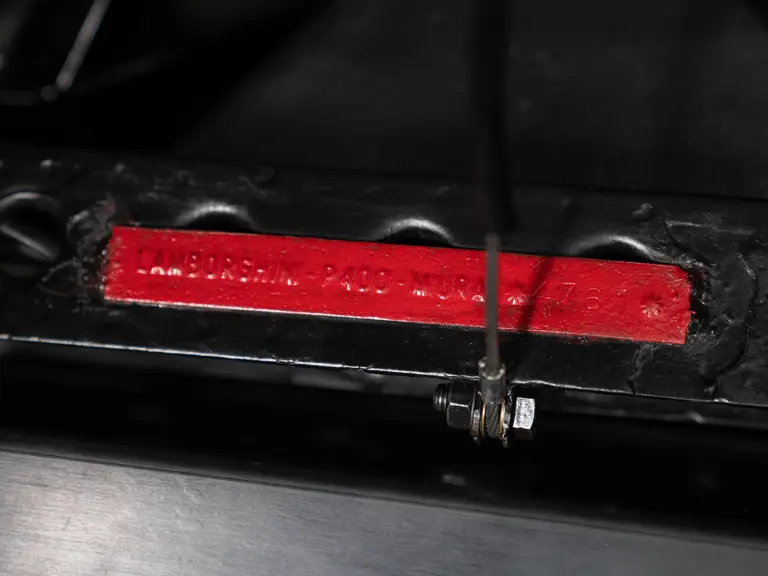
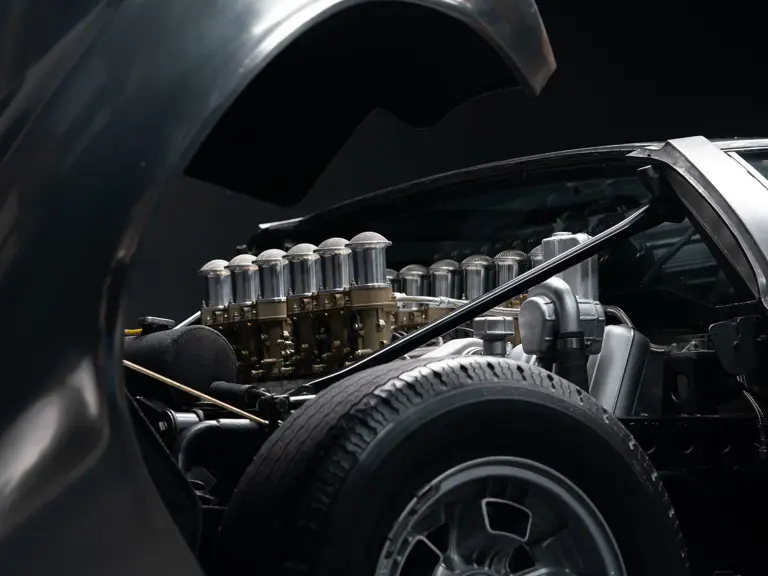
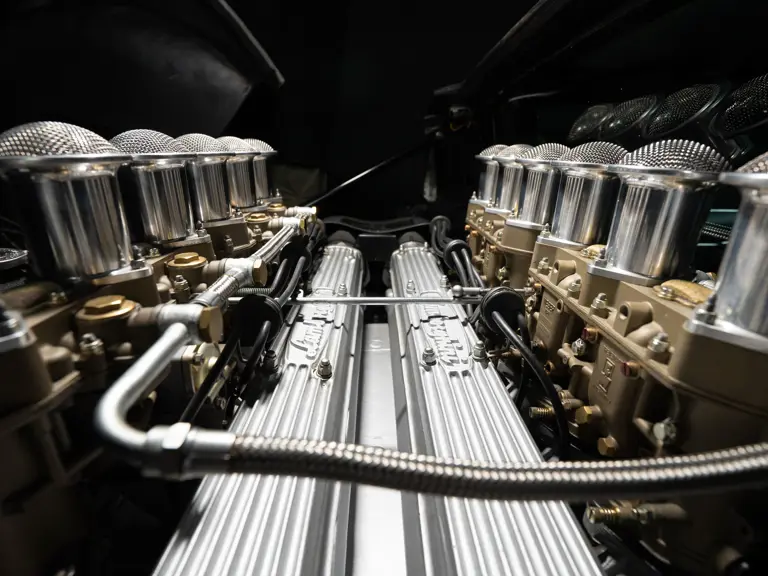
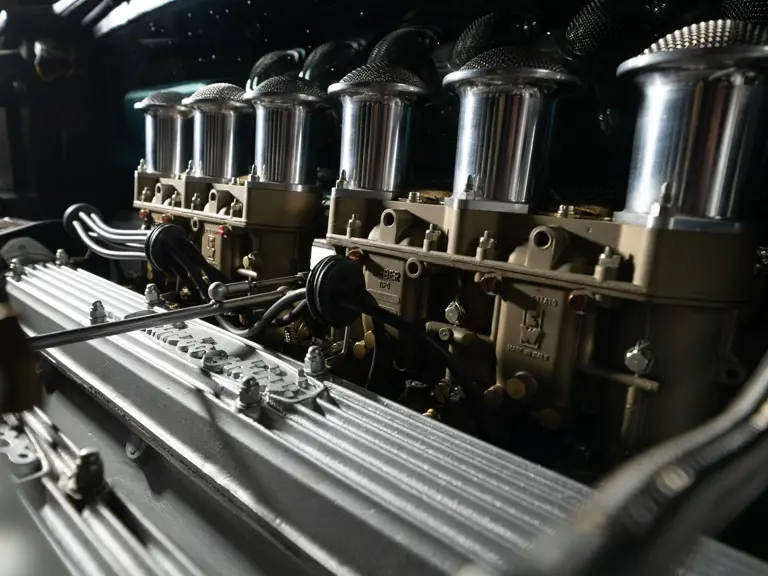

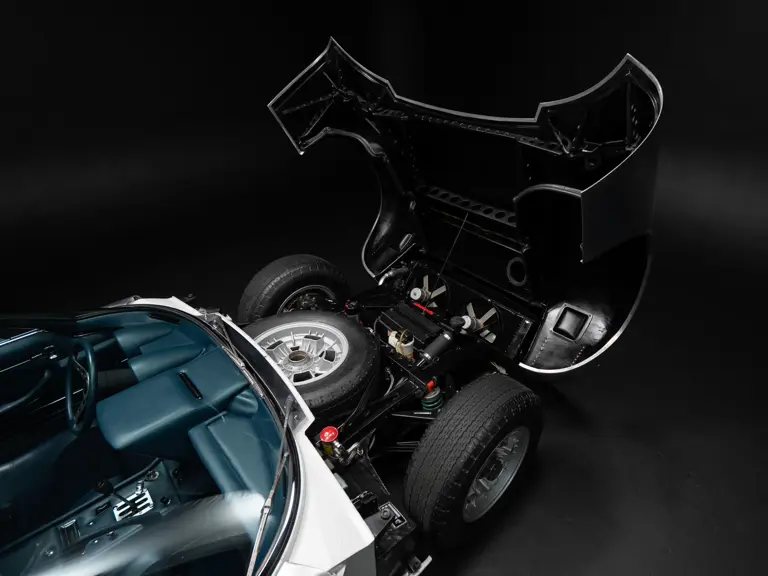
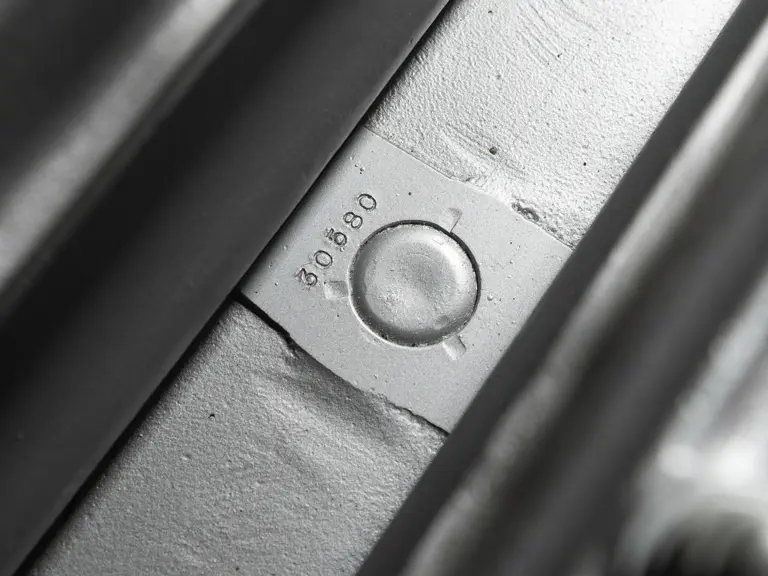
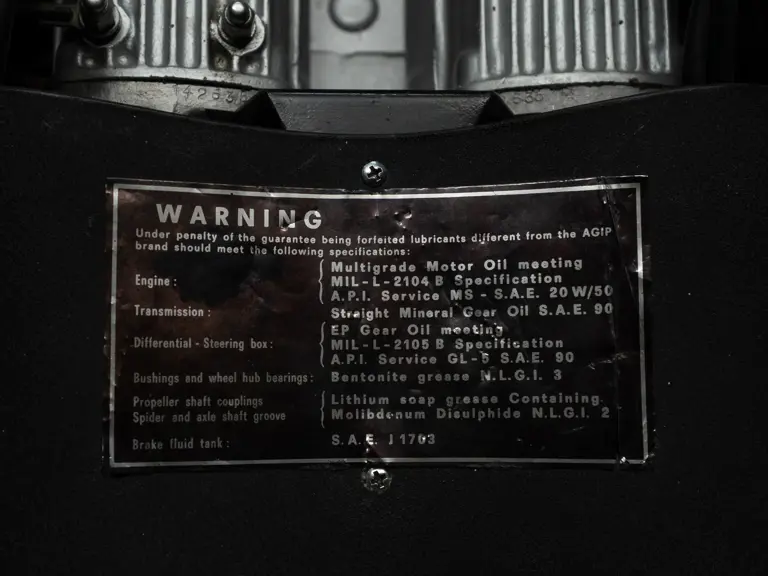
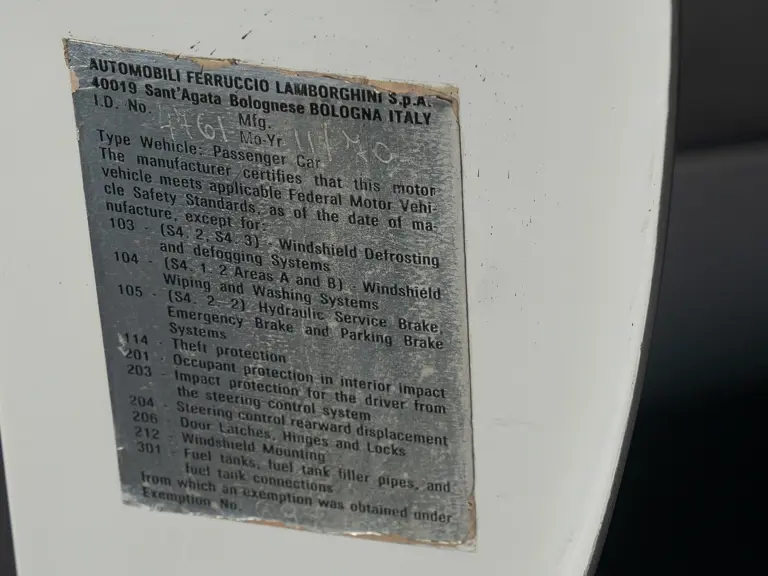

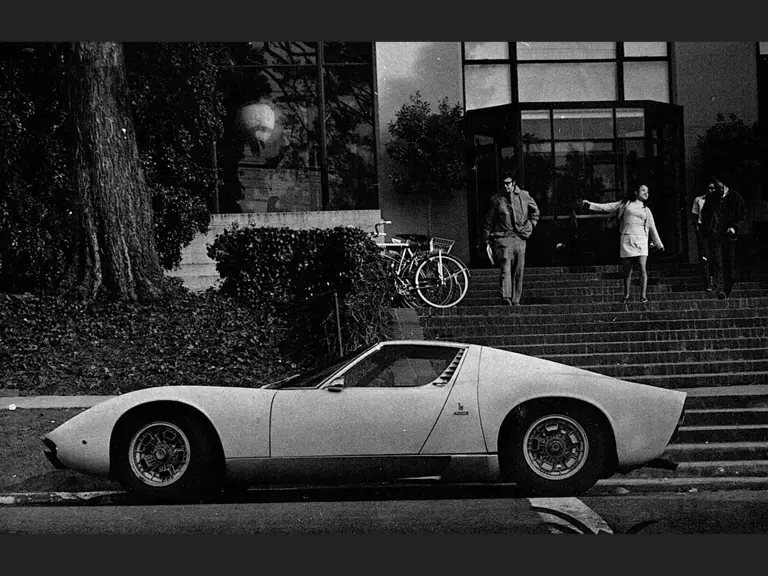
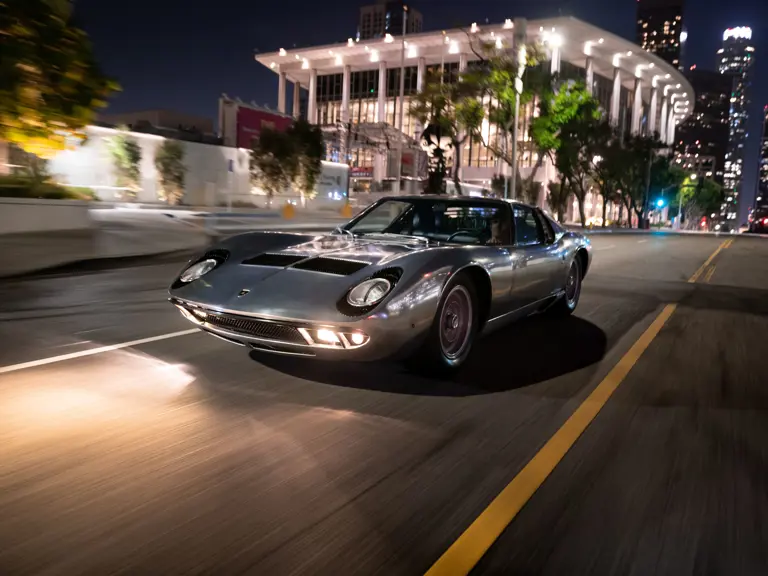

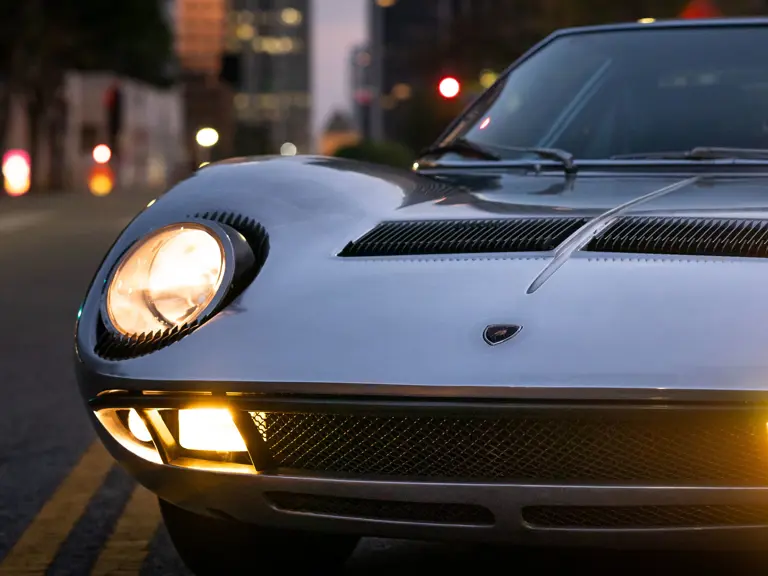
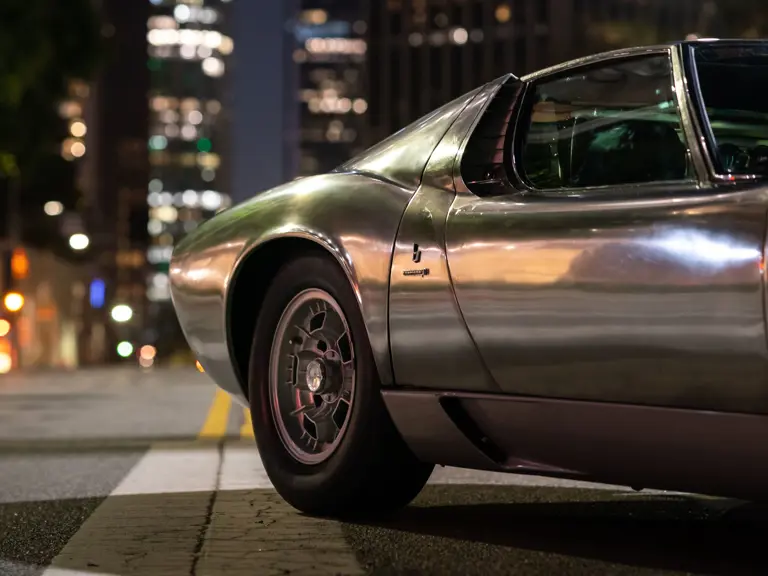
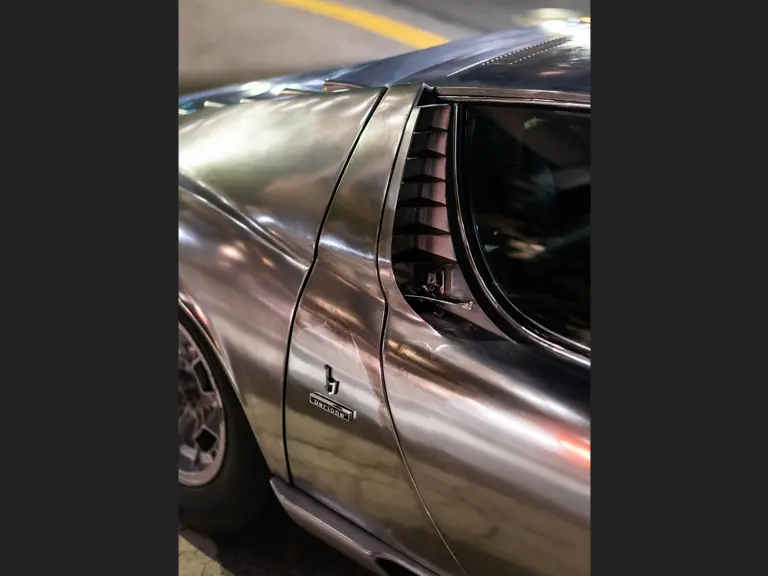
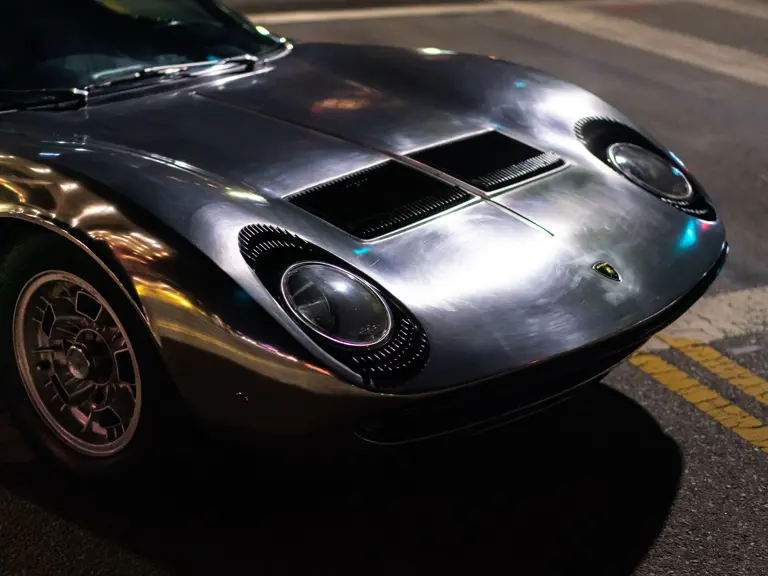
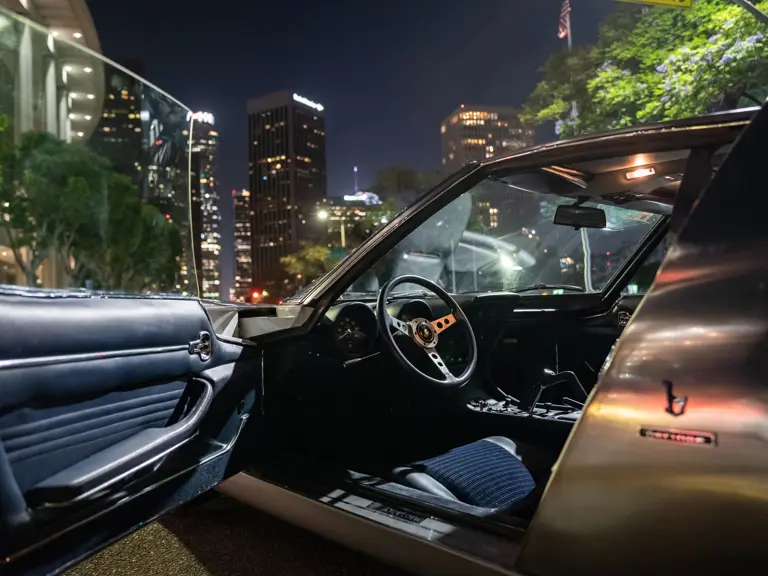
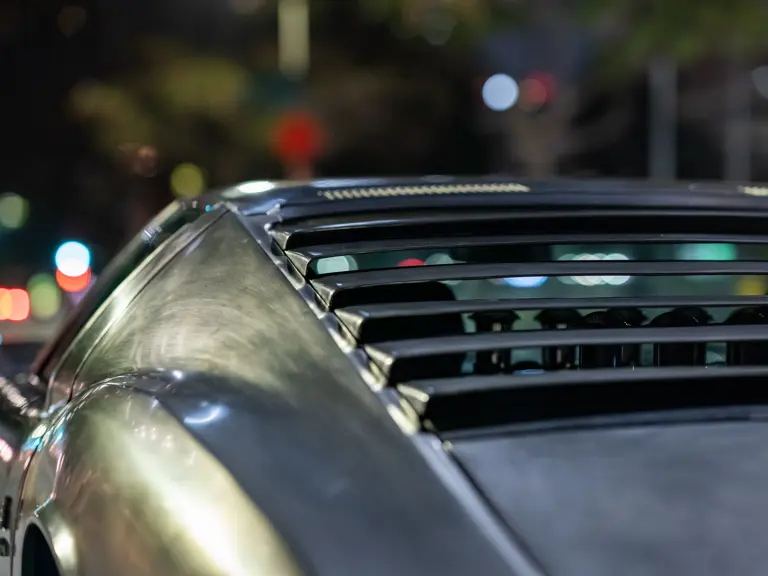
 | Monterey, California
| Monterey, California

